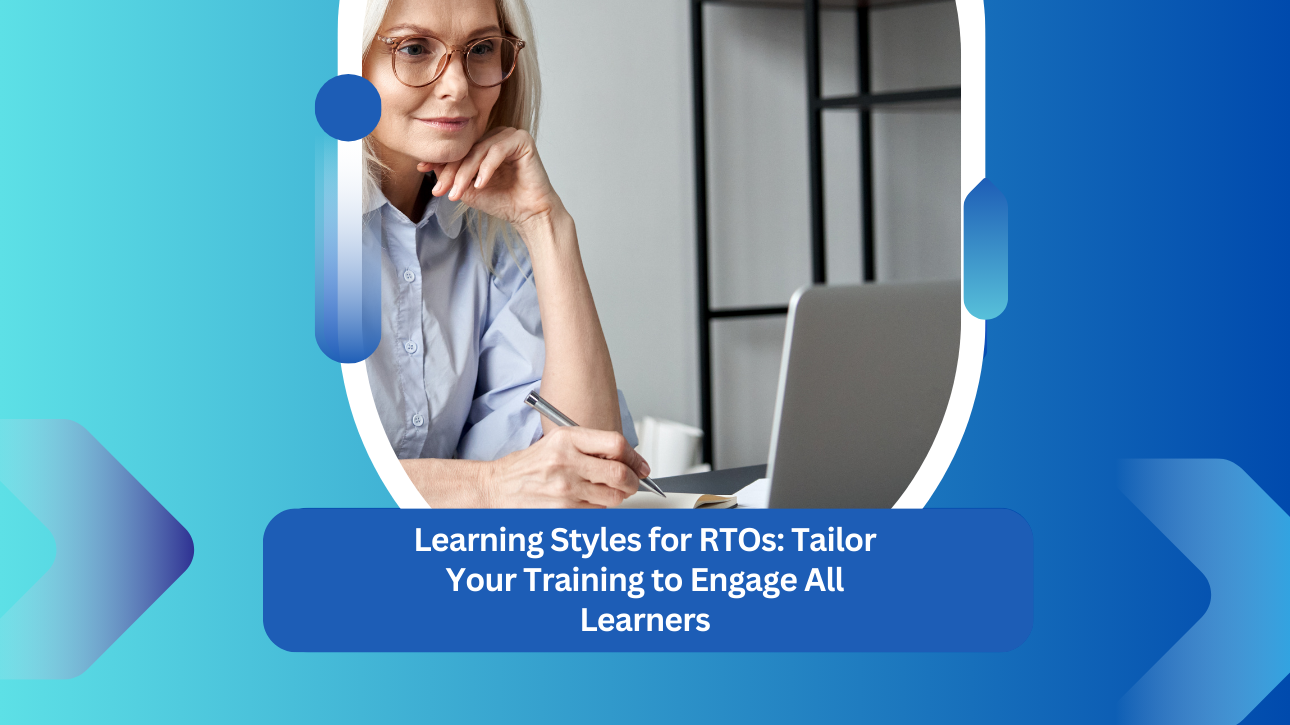Are Learning Styles Real
That’s the question that’s been on the minds of educators and researchers for decades. And the answer isn’t straightforward.
On the one hand, there’s a lot of evidence to suggest that people learn in different ways. Some people prefer to learn by seeing and doing, while others prefer to learn by listening or reading.
On the other hand, there’s also evidence to suggest that focusing too much on learning styles can actually be harmful. It can lead to students believing that they can only learn in one way and that they’re doomed if they don’t have the right learning style for a particular subject.
So, what should RTOs do?
Our advice is to take a balanced approach.
Recognise that there are different learning styles and try to incorporate a variety of learning activities into your training. But don’t get too hung up on trying to match each student with their perfect learning style.
The most important thing is to create a learning environment that is safe, supportive, and engaging for all students.
What are Learning Styles?
Learning styles are the different ways in which people learn best. They are influenced by a variety of factors, including genetics, personality, and environment. Some people learn best by seeing, others by hearing, and still others by doing.
Why are Learning Styles Important for RTOs
Understanding the different learning styles is important for RTOs because it allows them to tailor their training to engage all learners. When students are able to learn in their preferred learning style, they are more likely to be engaged and to learn effectively.
The Different Learning Styles

There are many different learning styles, but some of the most common include:
- Visual learners: Visual learners learn best by seeing. They prefer to learn through images, diagrams, and videos.
- Auditory learners: Auditory learners learn best by hearing. They prefer to learn through lectures, discussions, and podcasts.
- Kinesthetics learners: Kinesthetics learners learn best by doing. They prefer to learn through hands-on activities, simulations, and role-playing exercises.
- Verbal learners: Verbal learners learn best by reading and writing. They prefer to learn through written materials, such as textbooks and articles.
- Logical learners: Logical learners learn best by thinking about concepts and ideas. They prefer to learn through problem-solving and critical thinking activities.
- Social learners: Social learners learn best by interacting with others. They prefer to learn through group discussions, projects, and presentations.
- Solitary learners: Solitary learners learn best by working independently. They prefer to learn at their own pace and in their own way.
How to tailor your RTO’s training to different learning styles
There are a number of ways to tailor your RTO’s training to different learning styles.
- Use a variety of teaching methods: This will help to appeal to all learners, regardless of their learning style.
- Provide students with opportunities to learn in their preferred learning style: This will help them to learn more effectively and efficiently.
- Be patient and understanding: It may take some time for students to adjust to a new learning environment or to learn a new skill.
- Encourage students to reflect on their learning: This will help them to identify their own learning style and to develop strategies for learning more effectively.
Benefits of tailoring your RTO’s training to different learning styles
There are a number of benefits to tailoring your RTO’s training to different learning styles, including:
- Improved student engagement: When students are able to learn in their preferred learning style, they are more likely to be engaged and to learn effectively.
- Better learning outcomes: Students who are able to learn in their preferred learning style are more likely to achieve better learning outcomes.
- Increased student satisfaction: Students who are able to learn in their preferred learning style are more likely to be satisfied with their learning experience.

Tips for Learning Styles Incorporated by RTOs
- Use a variety of learning materials. This could include textbooks, articles, videos, podcasts, and online resources.
- Provide students with opportunities to learn in a variety of settings. This could include classrooms, laboratories, workshops, and online learning environments.
- Offer students a variety of assessment methods. This could include written exams, oral presentations, and practical demonstrations.
- Provide students with feedback on their learning. This will help them to identify their strengths and weaknesses and to develop strategies for improving their learning.
Conclusion
By understanding and accommodating different learning styles, RTOs can create a more inclusive and effective learning environment for all students.
Are you an RTO looking for quality RTO training resources? If yes, then VET Resources is your partner. We also have a YouTube Channel with videos on RTO related matters. We also offer free consultation to RTOs. For further information please contact here.
Frequently Asked Questions (FAQs)
Q.1. How can students identify their learning style?
A.1. There are a number of different ways to identify learning styles. One popular method is to take a learning style quiz. There are many different quizzes available online, and most of them are free to take. Another way to identify learning styles is to reflect on one’s own learning experiences. Think about what types of learning activities you enjoy and find most effective.
Q.2. Can students change their learning style?
A.2. While it is not possible to completely change one’s learning style, one can learn to adapt to different learning environments and to learn in different ways.
Q.3. What are the benefits of knowing one’s learning style?
A.3. Knowing one’s learning style can help one to learn more effectively. When a student is able to learn in their preferred learning style, they are more likely to be engaged and retain information better. Knowing one’s learning style can also help them to choose the right educational setting and to develop effective learning strategies.
Q.4. What are some common myths about learning styles?
A.4. One common myth about learning styles is that there is a single right way to learn. However, the truth is that everyone learns differently. Another common myth is that people are born with a fixed learning style. However, learning styles can change over time and in different situations.
Q.5. How can I use my knowledge of learning styles to help others learn?
A.5. If you know someone’s learning style, you can tailor your teaching to their needs. For example, if you are teaching a visual learner, you can use images and diagrams to explain concepts. If you are teaching an auditory learner, you can use lectures and discussions. And if you are teaching a kinesthetics learner, you can use hands-on activities and simulations.
Q.6. Can learning styles change over time?
A.6. Yes, learning styles can change over time. As we age, our brains change and we may find that we learn better in different ways. Additionally, our learning styles can be influenced by our life experiences, such as our education, career, and personal relationships.
Q.7. What if I have more than one learning style?
A.7. Most people have more than one learning style. This is perfectly normal. In fact, it is often beneficial to be able to learn in a variety of ways. This allows you to adapt your learning to different situations and materials.
Q.8. What is the difference between learning styles and learning preferences?
A.8. Learning styles are the different ways in which people learn best. They are influenced by a variety of factors, including genetics, personality, and environment. Some people learn best by seeing, others by hearing, and still others by doing.
Suggested Read: What is the Process of Course Renewal for RTOs
Disclaimer:
The information presented on the VET Resources blog is for general guidance only. While we strive for accuracy, we cannot guarantee the completeness or timeliness of the information. VET Resources is not responsible for any errors or omissions, or for the results obtained from the use of this information. Always consult a professional for advice tailored to your circumstances.






